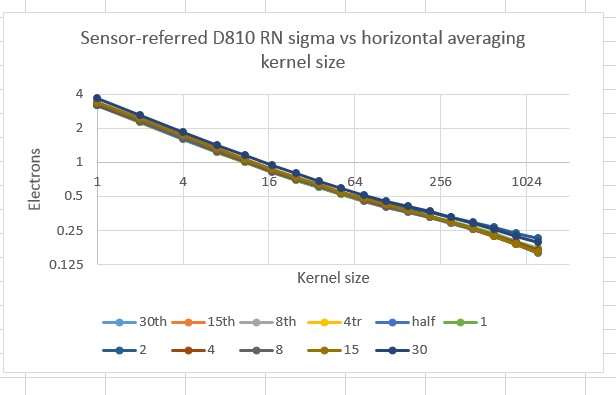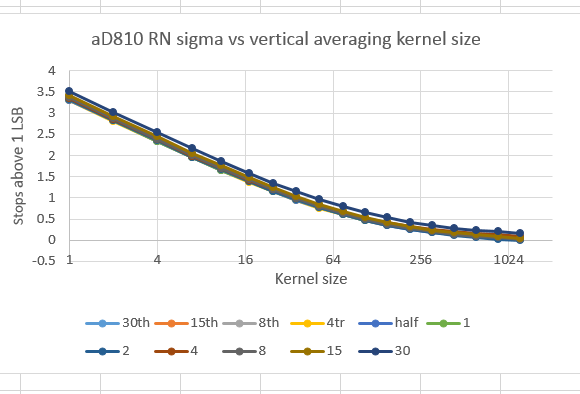A few posts ago, I did a series of D810 dark-field exposures with different shutter speeds to make sure that one of my test methods, which involved varying exposure by varying shutter speed, wasn’t affecting the quality of the read noise. It wasn’t.
Today I did a similar series at long shutter speeds to find out if the integration of the leakage current from the photodiodes over longer periods of time changes the frequency characteristics of the read noise. I used ISO 1000, which is the highest D810 ISO with minimal histogram clipping and no digital gain (except for white balance prescaling), and shutter speeds from 1/30 second to 30 seconds. Long exposure noise reduction and high-ISO noise reduction were turned off. I used the whole frame — and all four channels — for the calculations.
The spectral characteristics of the read noise don’t change.
The plots:
They’re not as tight as the 1/30 – 1/8000 second plots, but they’re pretty close. You can see in this post that, starting at 1/4 second, Nikon applies some processing to the curve that lowers the dark-field noise, even if you tell it not to. After that, as the exposures get longer, the read noise gets worse, as you’d expect. However, the basic shape of the curves doesn’t change.


Leave a Reply